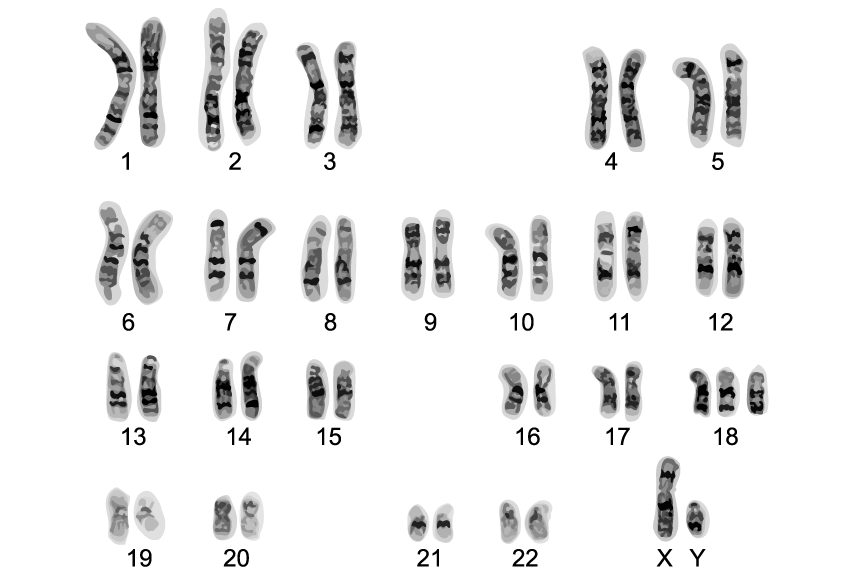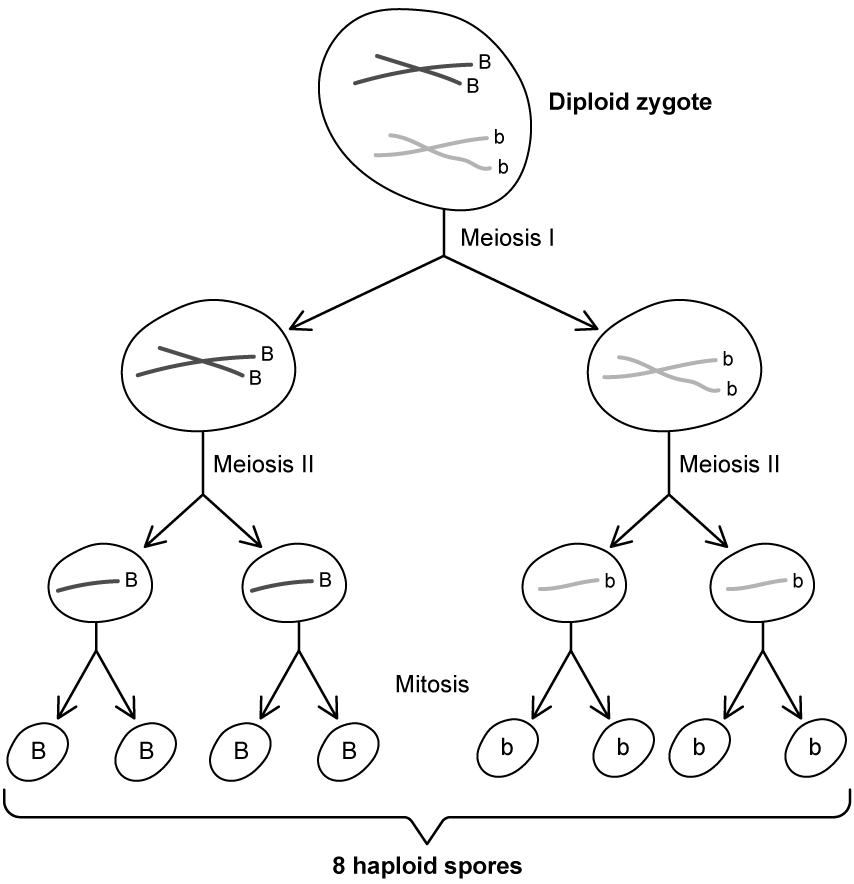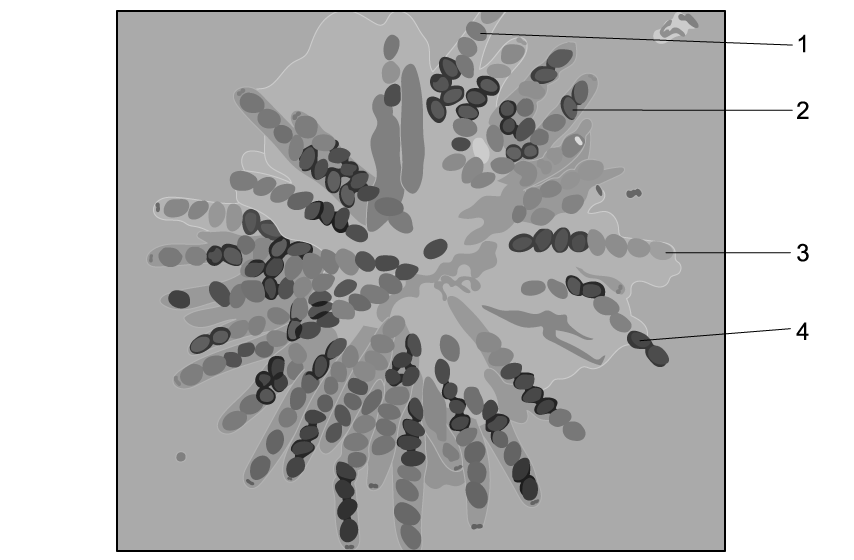Question 1
The following choices each show a bivalent.
Along the length of the bivalent are some values of probability.
Which choice reflects the most likely probabilities of a chiasma forming at each of the positions shown?
The following choices each show a bivalent.
Along the length of the bivalent are some values of probability.
Which choice reflects the most likely probabilities of a chiasma forming at each of the positions shown?
The image shows a human karyotype of cells taken from amniocentesis in the later stages of the first half of a pregnancy. 
What conclusion can be drawn from this karyotype?
The foetus's karyotype is entirely normal.
The foetus has Down syndrome.
The foetus has trisomy 18 (Edward's syndrome) and is unlikely to survive beyond the age of 12 months.
The foetus is female.
Which row best describes an organism whose diploid number is 16 and whose body cells have an amount of DNA, x?
| Number of chromosomes per body cell | Number of centromeres | Amount of DNA per cell at the beginning of meiosis I | |
| A. | 16 | 16 | 2x |
| B. | 8 | 16 | 2x |
| C. | 16 | 8 | 4x |
| D. | 8 | 8 | x |
The fungus Sordaria fimicola is an excellent organism for observing the effects of meiosis because its gametes (spores) are coloured and can be observed under a microscope.
Wild-type fungus has black spores. Another variety has tan spores.
The allele for black spores is B and the allele for tan spores is b.
These can be crossed to produce a diploid zygote, which can then undergo meiosis to produce spores. In this species, a final mitotic division results in 8 spores produced as shown below. 
Each zygote produces its eight spores in a structure called an ascus, in which the eight spores line up to reveal the alignment of homologous chromosomes during the meiotic division that led to their formation.
A microscope image of some asci is shown below. 
Which asci, labelled 1 - 4 in the microscope view above, show evidence that crossing over has taken place?
All of them
2 and 3
1 and 3
2 and 4
Four students were asked to draw an image of a cell undergoing meiosis I in one of its phases (prophase I).
Which is the best-drawn example produced by these four students?



